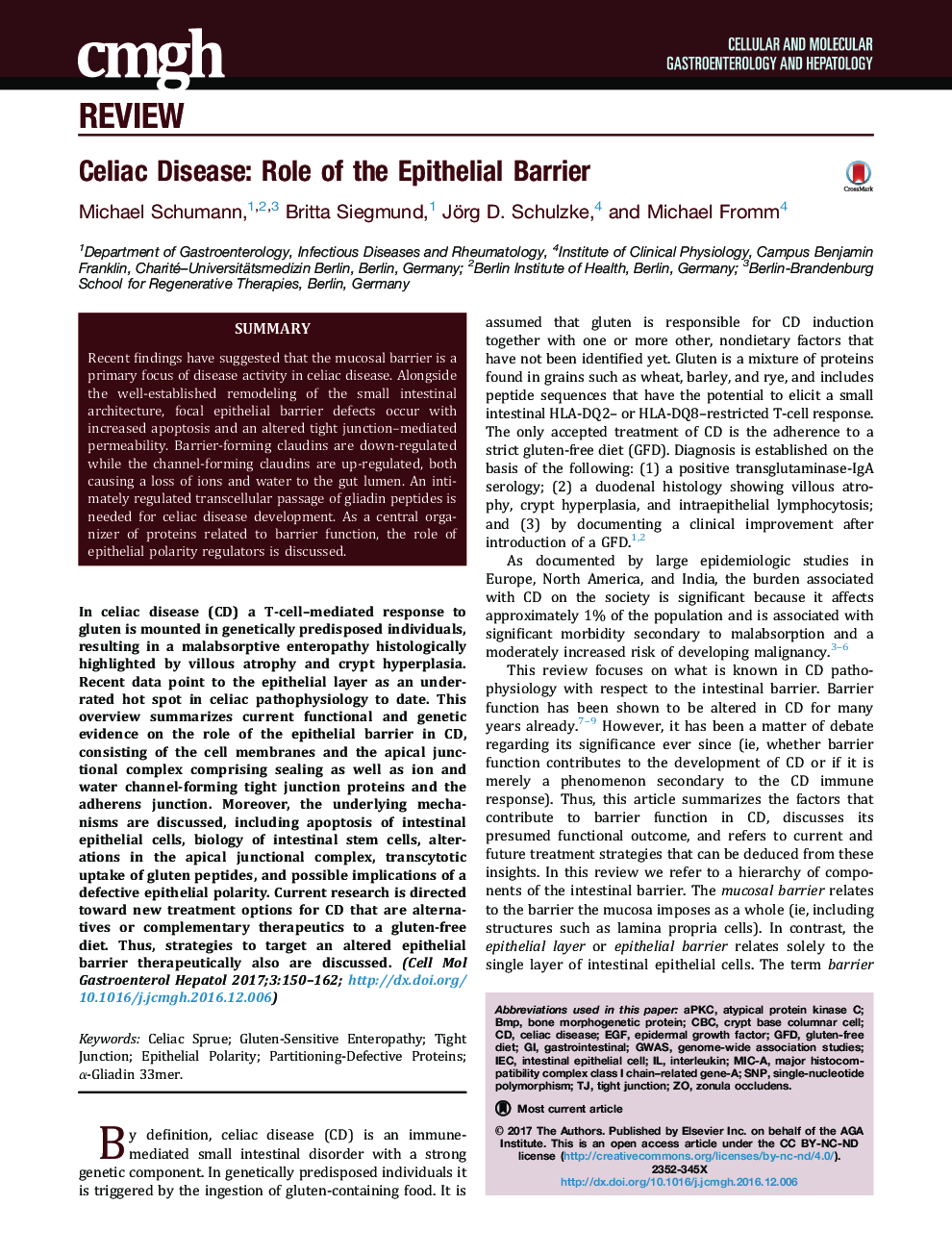| Article ID | Journal | Published Year | Pages | File Type |
|---|---|---|---|---|
| 5517285 | CMGH Cellular and Molecular Gastroenterology and Hepatology | 2017 | 13 Pages |
In celiac disease (CD) a T-cell-mediated response to gluten is mounted in genetically predisposed individuals, resulting in a malabsorptive enteropathy histologically highlighted by villous atrophy and crypt hyperplasia. Recent data point to the epithelial layer as an under-rated hot spot in celiac pathophysiology to date. This overview summarizes current functional and genetic evidence on the role of the epithelial barrier in CD, consisting of the cell membranes and the apical junctional complex comprising sealing as well as ion and water channel-forming tight junction proteins and the adherens junction. Moreover, the underlying mechanisms are discussed, including apoptosis of intestinal epithelial cells, biology of intestinal stem cells, alterations in the apical junctional complex, transcytotic uptake of gluten peptides, and possible implications of a defective epithelial polarity. Current research is directed toward new treatment options for CD that are alternatives or complementary therapeutics to a gluten-free diet. Thus, strategies to target an altered epithelial barrier therapeutically also are discussed.
